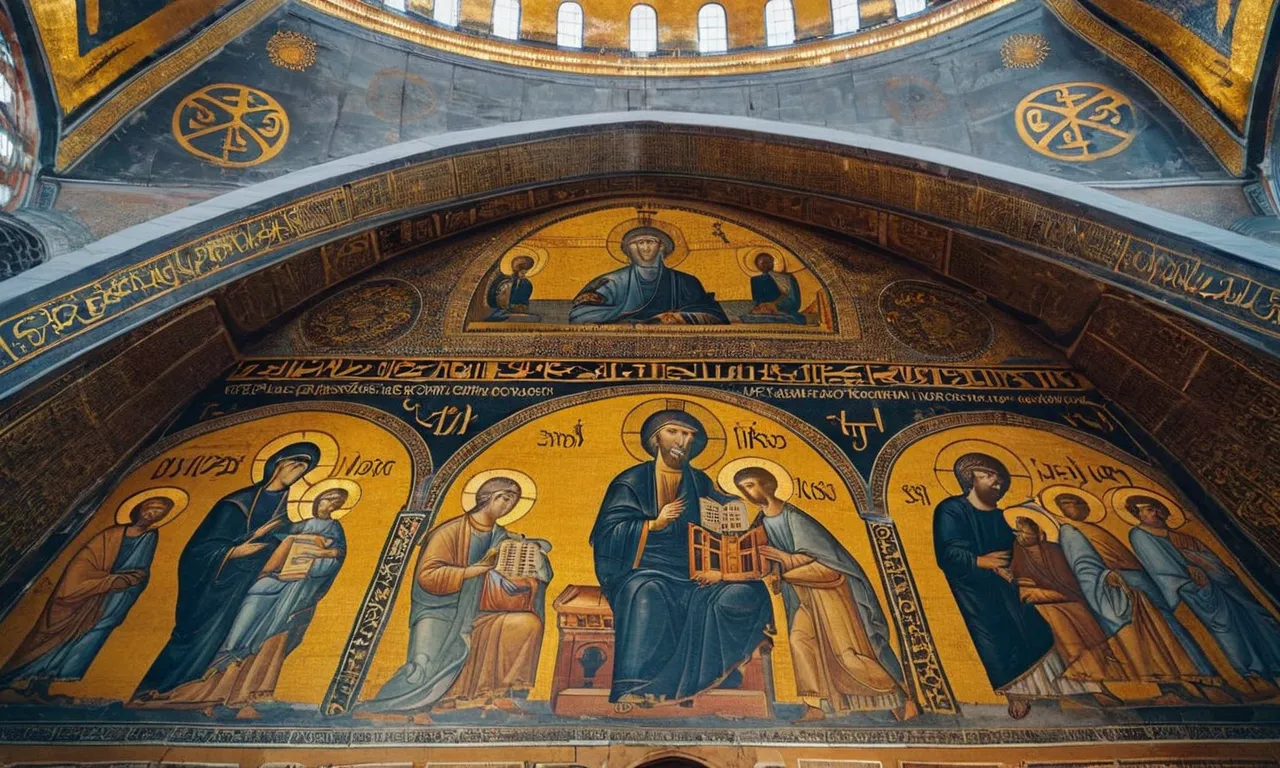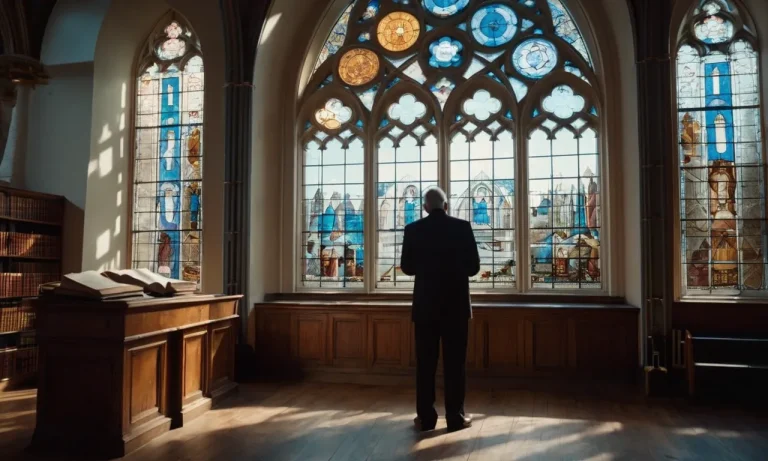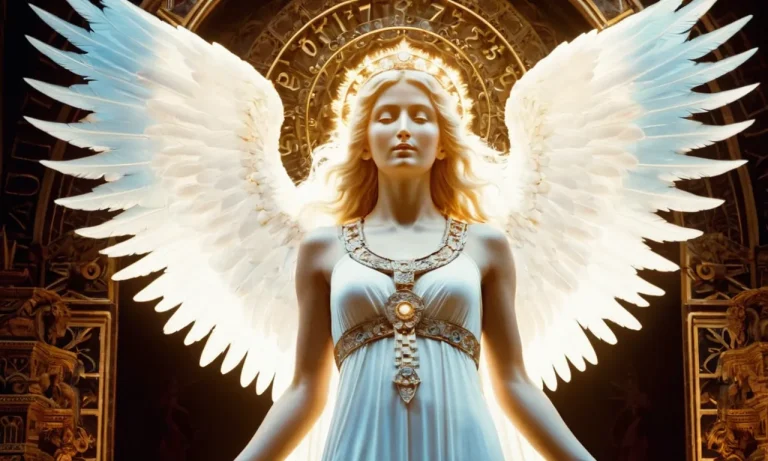The Cultural Legacy Of The Byzantine Empire
The Byzantine Empire, with its capital in Constantinople (modern-day Istanbul), was the continuation of the Roman Empire in the East following the fall of Rome. Lasting from the 4th to 15th centuries, the Byzantine Empire made immense cultural contributions in the areas of art, architecture, law, literature, education, philosophy, science, and religion.
These advancements not only shaped Byzantine civilization but also left a lasting mark on Western Europe and the Orthodox Christian world.
If you’re short on time, here’s a quick answer to your question: The Byzantine Empire made major cultural contributions in the realms of art, architecture, law, literature, education, philosophy, science, and religion.
Key legacies include the preservation of ancient Greek and Roman texts, stunning mosaics and icons, the Justinian Code of law, and the advancement of Orthodox Christianity.
Art and Architecture
Byzantine Art Style – Icons, Mosaics
Byzantine art is known for its iconic religious images and opulent church mosaics. As the official art of the Eastern Orthodox Church, Byzantine style emphasized flatness, symmetry, and rich use of color and gold to create a transcendent spiritual experience.
Byzantine icons depicting Christ, the Virgin Mary, or saints were seen as sacred objects to be venerated. They were painted on wood panels using tempera paints mixed with egg yolk according to strict conventions – large, staring eyes, elongated thin figures, and inverted perspective.
Famous examples include the 6th century Christ Pantocrator from Saint Catherine’s Monastery in Egypt’s Sinai Peninsula.
Elaborate mosaic cycles adorned church interiors across the Byzantine Empire, notably in Ravenna and Istanbul. Tiny glass and stone cubes were arranged in shimmering patterns of saints, angels, vegetation, rivers, and buildings.
Noteworthy mosaics survive at the Hagia Sophia, Chora Church, and Daphni Monastery near Athens.
Hagia Sophia and Other Architectural Achievements
The crowning architectural achievement of Byzantine civilization was the Hagia Sophia in Constantinople, completed in 537 AD. The enormous domed basilica represented a structural and aesthetic triumph, with its soaring 180-foot dome appearing weightless.
Innovations like pendentives and squinches enabled engineers to rest rounded domes on square bases without collapsing. This opened new vistas in religious architecture – domes came to symbolize the vault of heaven in Orthodox churches.
Other important Byzantine structures include the 6th century Hagia Eirene, which featured a typical Greek cross floor plan. Cross-in-square churches supported by columns eventually evolved into designs like the 11th century Hosios Loukas in Greece, an early example of asymmetry between aisles and galleries.
Regional architecture blended Byzantine elements with local styles, as seen in Armenia’s 7th century Etchmiadzin Cathedral or the Monreale and Cefalù Cathedrals in Sicily, which contain outstanding medieval mosaics.
Law
Justinian Code and Corpus Juris Civilis
The most significant legal achievement of the Byzantine Empire was the codification of Roman law under Emperor Justinian I in the 6th century. Justinian commissioned the great legal scholar Tribonian to head a committee to collect and synthesize centuries of Roman law into a comprehensive legal code.
The resulting Corpus Juris Civilis (Body of Civil Law) and the complementary Digest became the basis for modern civil law and inspired legal systems across Europe and the world. Here are some key facts about this monumental legal text:
- The Corpus Juris Civilis consists of four main parts: the Code, the Digest, the Institutes, and the Novellae.
- The Code compiled all of the extant imperial enactments and edicts into a systematic and coherent body of law divided into 12 books.
- The Digest compiled notable extracts from the writings of great Roman legal jurists like Ulpian and Paulus into 50 books.
- The Institutes was an elementary textbook summarizing the principles of Roman law in an accessible form.
- The Novellae were supplementary laws enacted after the publication of the Code.
The sheer scope and systematic organization of the Corpus Juris Civilis was an unprecedented achievement. Later Byzantine emperors issued annotations and commentaries on it, further refining this comprehensive legal text.
Even after the fall of the Byzantine Empire, the Corpus continued to be a major influence on legal thinking in the West. It was enthusiastically revived first in the Italian city-states and then more broadly during the medieval and Renaissance periods.
There are several reasons why Justinian’s codification had such a profound impact:
- It helped preserve the great body of Roman law that had accumulated over centuries, protecting it from being lost.
- It synthesized disparate legal traditions into a cohesive whole, providing a consistent framework.
- Its logical organization and systematic approach represented a major advance in legal theory.
- It enshrined principles of equity, reasonableness and fairness within the law.
- Its breadth addressed all major areas of law, providing a comprehensive reference.
The Corpus Juris Civilis is thus one of the Byzantine Empire’s most influential and enduring legacies. Its principles and commentaries inspired modern legal codes across Europe and even influenced common law.
As a testament to the legal genius of ancient Rome and Byzantium, it remains an intellectual triumph of the first order.
Literature
Preservation of Ancient Texts
The Byzantine Empire played a pivotal role in preserving ancient Greek and Roman texts. As the Roman Empire collapsed in the West, many libraries were destroyed and literary works were lost. However, in the surviving Eastern Empire, Byzantine scholars worked diligently to preserve these ancient works.
They meticulously copied manuscripts of Plato, Aristotle, Homer, Sophocles, and others. Without their efforts, much of ancient literature would have been completely lost.
The Imperial Library of Constantinople, founded in the 4th century, was a center of this preservation effort. At its peak, it contained over 100,000 manuscripts including important works of ancient philosophy, history, science, and literature.
Copies were also housed in other libraries across the Byzantine realm. When the Imperial Library was destroyed during the sack of Constantinople in 1204, many works were thankfully preserved in these other libraries.
Byzantine scribes played a vital role in this endeavor. With painstaking accuracy, they hand-copied ancient papyri and parchments, preserving both the content and the form of the originals. Their meticulous efforts ensured that seminal works were not lost to history.
As a result, today we still have access to the great writings of antiquity – from Plato, Aristotle, and Homer to histories by Herodotus and Thucydides. This was perhaps the Byzantines’ greatest gift to posterity.
Byzantine Historians and Chroniclers
In addition to preserving ancient works, Byzantine scholars also made original contributions to the literary canon. Byzantine historians and chroniclers produced expansive new works recording both contemporary events and the empire’s rich history.
Prominent examples include Michael Psellus, Anna Comnena, Procopius, John Skylitzes, George Akropolites, and Laonikos Chalkokondyles. Their historical works provide detailed insight into the personalities, events, and evolution of the Byzantine Empire over its 1000+ year history.
These accounts are relied upon by scholars today to study and understand Byzantine civilization.
Byzantine historians often had direct involvement in the imperial court which informed their analysis. Anna Comnena was the daughter of Emperor Alexios I and gave a vivid firsthand account of political intrigue in her seminal Alexiad.
Procopius served as a secretary to General Belisarius and documented his military campaigns against the Persians and Vandals with great detail.
Byzantine chronicles and histories were filled with rich detail, rhetorical flourishes, and philosophical musings. While not always completely objective, they provide invaluable windows into the world of Byzantium.
These celebrated works allowed its history, culture, and legacy to be transmitted to future generations. Without Byzantine historians, our picture of the medieval world would be vastly incomplete.
Education
Scholarship and Learning
The Byzantine Empire made major contributions to both scholarship and learning that would have a profound impact on cultures for centuries. Here are some of the key developments:
Revival of Classical Greek Knowledge: The Byzantines preserved many of the writings and teachings of ancient Greece that may have otherwise been lost, especially after the fall of the western Roman Empire.
Scholars in Constantinople carefully copied and studied texts of Plato, Aristotle, and other great thinkers that formed the foundation of classical education.
Advanced Curriculum: Education was highly valued, and the curriculum in Constantinople focused not just on religion but also on classic Greek learnings in philosophy, math, science, rhetoric, and more. Schools taught complex subjects to students starting at a young age.
This set a precedent for advanced education in Europe.
Imperial University: The University of Constantinople was founded in 425 and provided higher education, drawing scholars from around the empire. It had faculties of law, philosophy, medicine, and more and served as a model for medieval universities that would later emerge in the West.Preservation of Greek and Latin Texts: The Byzantines studied Greek thoroughly and also preserved literary texts in Latin. As Greek declined in the West after the fall of Rome, the Byzantine scholars served as crucial custodians of both languages and the written works of antiquity.Development of Byzantine Humanism: Byzantine education led to a growing interest in the study of classical culture, the humanities, rhetoric, and antiquity’s focus on human life and values. This helped keep humanistic studies alive and was an influence on the later Italian Renaissance.Impact on the Islamic World: The Byzantine Empire also had significant cultural interaction with the Islamic world during the Middle Ages. Shared scholarship from the classics and in fields like philosophy, science, and medicine was exchanged through places like Baghdad.
In these ways, the educational system of the Byzantine Empire represents a bridge between classical antiquity and the emerging medieval world. The empire preserved Greek and Roman knowledge, while also developing formal schools, advanced curriculum, higher learning institutions, and humanistic attitudes – forming a foundation for scholarship that continues to resonate across Western civilization.
Philosophy
Interaction of Classical Philosophy and Christian Theology
The Byzantine Empire was a continuation of the Roman Empire in the East, and as such, inherited the rich philosophical traditions of ancient Greece and Rome. However, the rise of Christianity in the 4th century CE dramatically impacted the philosophical landscape.
There emerged a synthesis between classical philosophy and Christian theology that profoundly shaped the Byzantine intellectual tradition.
Many early Christian thinkers, such as Augustine of Hippo, incorporated ideas from Neoplatonism into Christian theology. The Neoplatonic concept of the soul’s ascent to the divine One significantly influenced Augustine’s notions of the soul’s journey to God.
Other philosophers sought to integrate Aristotelian logic and metaphysics with Christian doctrines. John Philoponus critiqued Aristotle’s views on the eternity of the world and motion, arguing they contradicted biblical teachings.
Meanwhile, Christian philosophers like John of Damascus assimilated Aristotle’s logic into their systematic defenses of orthodox theology.
In the 6th century, the Neoplatonist philosopher Pseudo-Dionysius further developed Augustine’s synthesis of Platonism and Christianity in his mystical theology. Drawing on Plotinus, Pseudo-Dionysius described an ascent of the soul to God using negative or apophatic language, focusing on what God is not rather than presuming to define the divine essence.
Later Byzantine philosophers like Maximus the Confessor expanded on Pseudo-Dionysius’ apophatic mysticism.
The greatest achievement of Byzantine Christian philosophy was the hesychast tradition developed from the 14th century onward. Hesychast philosophers like Gregory Palamas integrated theology, mysticism, and logic in their contemplative practice.
For the hesychasts, deification or theosis – the participation in God’s energies – was the goal of human existence. Their experiential mysticism was coupled with rigorous philosophical explication influenced by Aristotle.
Therefore, while deeply shaped by Greek philosophy, Byzantine Christian thought also transformed the classical tradition in significant ways. The creative synthesis of Hellenic and biblical ideas contributed immensely to the philosophical legacy of medieval Europe and the Middle Ages.
Science and Medicine
The Byzantine Empire played a crucial role in preserving much of the scientific and medical knowledge of ancient Greece and Rome. As the Roman Empire declined in the West, many ancient Greek and Latin texts were lost or destroyed.
However, in the Eastern Roman Empire, later known as the Byzantine Empire, these texts were carefully preserved, copied, and even expanded upon.
The Byzantines viewed themselves as the successors of ancient Greece and Rome. They set up centers of learning to study the classics and train new generations of scholars. In Constantinople, which served as the Byzantine capital, the Imperial Library amassed one of the largest collections of ancient texts in the world.
Monasteries across the empire also became repositories of knowledge, meticulously copying manuscripts to prevent valuable information from being lost.
In addition to preserving prior Greek and Roman learning, Byzantine scholars made several key advancements:
- They expanded on the mathematical and astronomical works of ancient thinkers like Euclid, Archimedes, and Ptolemy.
- They produced medical manuals synthesizing the writings of Galen and Hippocrates, which helped spread this knowledge.
- They studied Aristotle extensively and wrote important commentaries that shaped medieval philosophy and theology in Europe.
When the Byzantine Empire fell in 1453, many scholars fled westward with armloads full of manuscripts. This mass migration of knowledge, especially to Italy, played a pivotal role in catalyzing the Italian Renaissance.
In this way, the Byzantines preserved the torch of Greek and Roman learning through history’s darkest ages.
Religion
Orthodox Christianity
The Byzantine Empire played a fundamental role in shaping Orthodox Christianity, which became the dominant faith in the region. Here are some key points about Byzantine Orthodoxy:
- The Council of Chalcedon in 451 CE affirmed the Orthodox doctrines of the dual nature of Christ and the Virgin Mary as the Mother of God. This council separated from the Coptic and Armenian churches which rejected these doctrines.
- The Emperor Justinian sought unity in the church and suppressed some unorthodox beliefs like Monophysitism. However, he was unsuccessful in reconciling with the anti-Chalcedonian churches.
- Many theological debates shaped Orthodox beliefs, like the Iconoclastic Controversy in the 8th-9th centuries about the veneration of icons. Iconodules eventually triumphed, affirming the place of icons in worship.
- Byzantine missionaries helped spread Orthodox Christianity to the Slavs, establishing the faith in Serbia, Bulgaria and Kievan Rus’. Saints Cyril and Methodius were pivotal in devising the Glagolitic alphabet for Slavonic translations of Scripture and liturgy.
- The Divine Liturgy of St. John Chrysostom became the standard worship service. Byzantine forms of music and architecture also influenced Orthodox traditions.
- There was generally close cooperation between the imperial state and Orthodox Church leaders, although occasional emperors did defy the church.
Byzantine Missions
The Byzantine Empire engaged in extensive missionary efforts to spread Orthodox Christianity among neighboring peoples. Here are some key aspects of their evangelism:
- Under Emperor Heraclius, the Byzantines sent missions to the Serbs and Croats, establishing Orthodoxy there. Saints Cyril and Methodius continued this work among the Slavs in the 9th century.
- The conversion of the Slav ruler Vladimir of Kiev in 988 CE marked Orthodoxy becoming dominant in Kievan Rus’. Vladimir destroyed pagan idols and had subjects baptized in the Dnieper River.
- Byzantine monks Methodius and Constantine (later Cyril) created the Glagolitic alphabet to translate Scripture into Old Church Slavonic, allowing services in the local language.
- Bulgaria officially converted to Orthodoxy in 864 CE under Prince Boris I, aligning with Constantinople and receiving priests, liturgy and writings in Slavonic.
- Missionary efforts brought Orthodox Christianity to neighboring Georgia and Armenian territories, although tension persisted with the anti-Chalcedonian Armenian church.
- Later Byzantine conquest of Bulgaria aimed to forcefully reconvert Bogomil heretics, showing missionary work mixed with political motivations.
- Orthodox unity faltered with the Great Schism of 1054 CE dividing Rome and Constantinople, hardening the East-West religious split in Europe.
Conclusion
In conclusion, the Byzantine Empire acted as a vital bridge between the ancient Greco-Roman world and medieval Europe. Its achievements spanned arts, architecture, law, literature, education, philosophy, science, and Orthodox Christianity.
Byzantine culture both preserved prior knowledge and made its own innovative advancements across many spheres. The Empire’s cultural legacy continues to influence Orthodox Christian nations and provides a window into a rich, sophisticated civilization that thrived for over a millennium.








